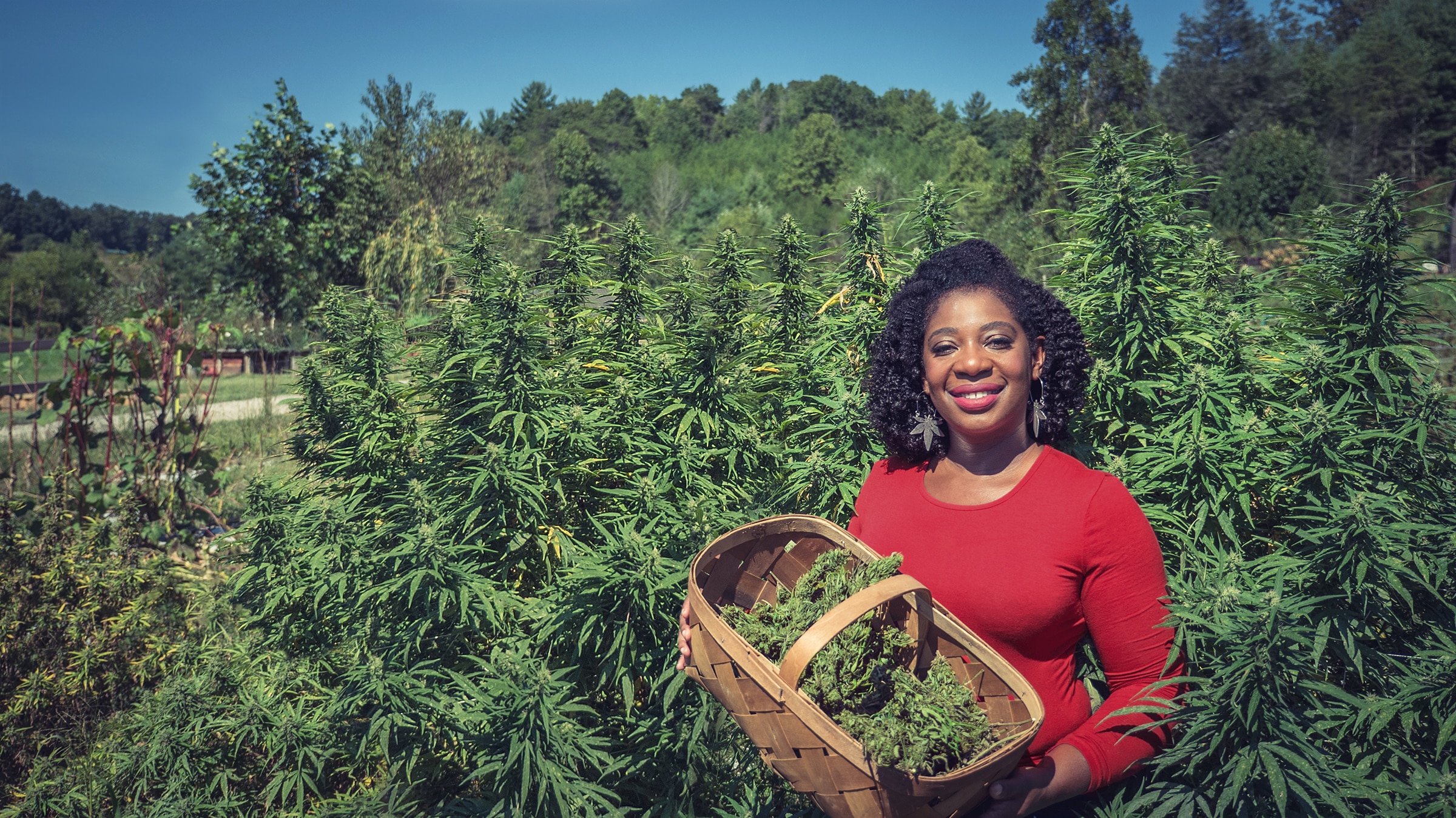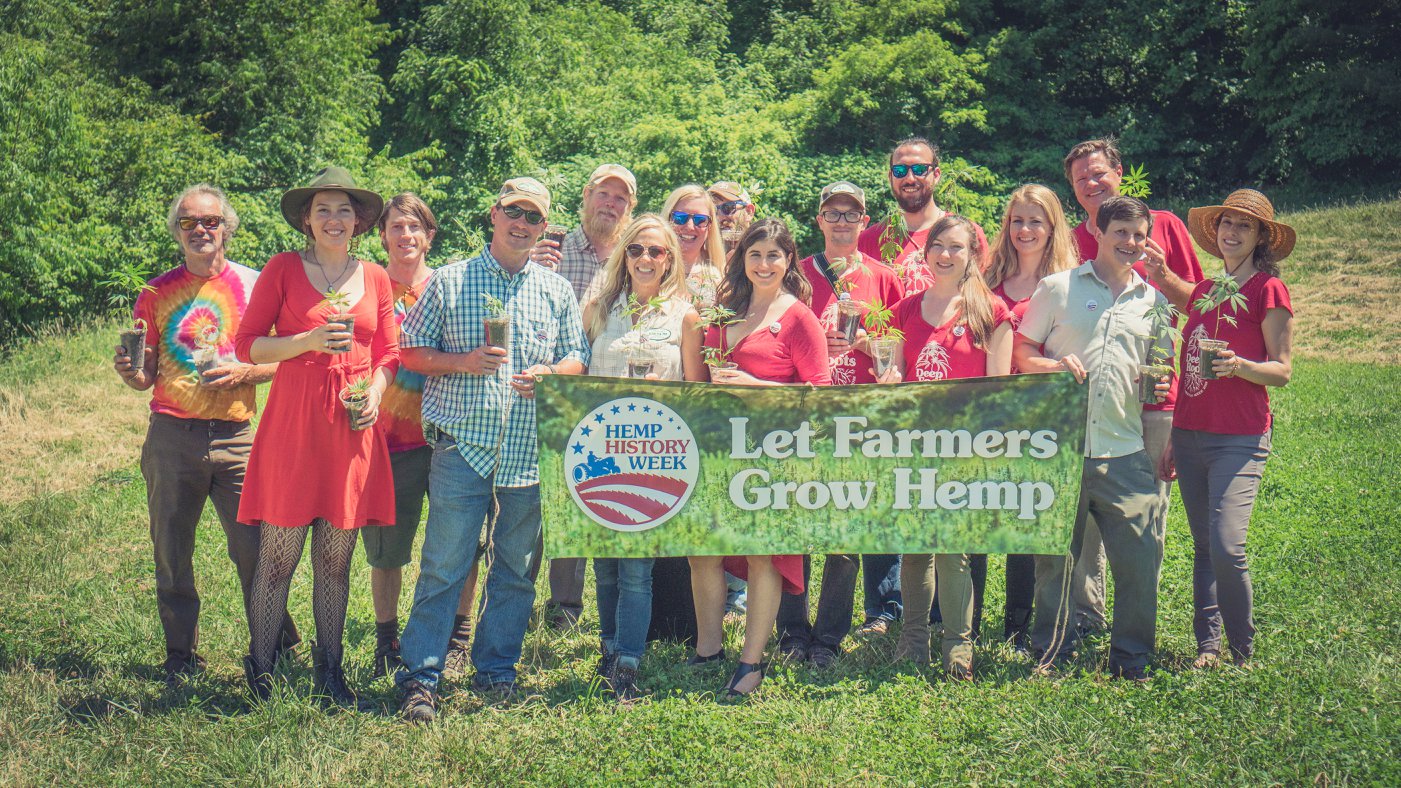Hemp History Week is celebrating 10 years as the U.S.’s largest educational campaign about hemp, supported by grassroots organizers, leaders from the industry, farmers and hemp advocates. Hemp History Week was started by the Hemp Industries Association and pioneering hemp businesses like Dr. Bronner’s, Nutiva and Manitoba Harvest as a way of raising awareness around hemp and fighting for regulation that would allow for its farming and production.
There is much to celebrate: this past January, the Farm Bill that was passed by Congress and signed into law by the administration made hemp agriculture in the U.S. legal again, after decades of prohibition. Even before this full legalization, several states had already taken advantage of existing regulations that allowed for farmers to plant research plots of hemp. Speaking to the farmer-activists who have led the way for revitalizing hemp in Kentucky, North Carolina and West Virginia, one senses that there are both great opportunities and distinct perils that lie ahead for those who want to grow “the plant.”
Revitalizing Rural Communities
As a farmer and a veteran living in Rockcastle County, Kentucky, Michael Lewis could see that many farmer-veterans around him were struggling. “It just felt kind of weird that we live in a rural agricultural area and we have these food insecurity issues, so I kind of was just appalled by it.” This disconnect between the fertile land and what farmer-veterans were able to put on their own tables spurred Lewis to start the Growing Warriors project, which serves as a training resource for veterans who are moving into production agriculture.
“I got into hemp by accident,” says Lewis with a laugh, “I didn’t start out as a hemp guy.” His activism and work with Growing Warriors and other programs for veterans had connected him to Kentucky Agriculture Commissioner James Comer (now a congressman), who was pushing for Kentucky to reclaim its status as the nation’s leading hemp producer—a place it had held until prohibition. Lewis was initially excited not so much by hemp itself, but by the processing infrastructure and job opportunities that it could potentially bring back to a part of Kentucky that had been devastated by the demise of both the tobacco and textile industries. “You know, I’m thinking in my mind oh the irony, right? Agriculture and textile are coming back!” says Lewis with excitement.

Even though passage of the Farm Bill has opened the door for this fledgling industry, Lewis senses that it’s still a long way from being viable. For one, the textile industry is built to process soft, short fibers, like cotton—not long, strong fibers like hemp. And prior to that step, farmers must find the right strains that work for the Kentucky climate and are appropriate as a fiber crop. “We can’t standardize equipment to get to scale until we standardize the crops,” points out Lewis, “and we don’t have stable genetics because most of the seeds came in from outside the U.S.”
But for most farmers getting into hemp now, fiber is not the main focus. The current fad for any product that contains CBD (cannabidiol, one of the many non-psychoactive compounds found in the cannabis plant) has led to a kind of “green rush” in which most farmers planting hemp are growing for nutraceutical uses. Lewis has a sober view of the CBD craze that is driving farmers around him to take on what he views as big risks, many of them putting large numbers of acres of hemp into the ground, and predicts that “you’re gonna see a lot of people lose a lot of money—and you’re gonna see, you know, 10 or 15 percent rise above.”
Making Hemp Equitable
Clarenda Stanley-Anderson, who goes by “Farmer Cee” and farms hemp in North Carolina with her husband Malcolm, also came to hemp in a somewhat roundabout way. Even though Cee comes from a multi-generational Alabama farming family, she says “the last thing I wanted to do was farm.” Instead she studied marketing, earned a master’s in education, and eventually got into fundraising work—leading to her current role as Principal Gifts Officer for The Nature Conservancy.
But then Malcolm, a veteran, began suffering from combat-related PTSD—and several other family members were also facing health challenges. “We had been looking at eastern medicine and natural solutions,” explains Cee, “and eventually ran across cannabis.” Malcolm began travelling to Colorado and Oregon, where marijuana had been legalized, so he could learn about growing the plant. When hemp was legalized in North Carolina in 2018, Malcolm and Cee decided to start Green Heffa Farms, to try their hand at growing the plant themselves. While Green Heffa focuses on nutraceutical uses, Cee explains that “we look at the whole plant, all parts of the plant that are beneficial.”

Though not setting out to become activists, Cee and Malcolm, who are black American, quickly realized that for people of color, hemp farming presented numerous challenges over and above those already faced by white farmers. “I will be frank,” shares Cee, “this industry has not necessarily been receptive: we are often the only people of color in the room and we are made to know it.” Besides not being represented in the commissions that set agricultural policy and license hemp farmers, people of color are being hurt by specific Farm Bill provisions, such as one that bars anyone charged with a cannabis-related offense in the last ten years from obtaining a license for growing hemp (even though black and white people use marijuana at roughly the same rates, black people are almost four times as likely to be arrested for it). The cost of entry is high for hemp, with money often needed for consultants, seeds, clones, special storage and even security—making it less likely that disadvantaged farmers will have the means to start growing it.
Cee has become vocal about the inequities she sees, and the couple has started offering workshops throughout the south for farmers like them who are trying to get into hemp. One such workshop, called “Leveling the Planting Field,” talks about the regulatory hurdles to growing hemp as well as the interpersonal challenges that often come with running a family farm. Despite the challenges, Cee remains optimistic about the potential of hemp: “we have the potential to create a new model within the industry,” says Cee, “this plant has so many benefits for everyone, and if we want to be able to reach over some divide—to where it doesn’t matter, black or white—if we can all collectively focus on the green together, you know—what an example that would be for other industries!”
THC Tests and Crop Insurance
Morgan Leach first encountered the potential of hemp as a student at West Virginia University’s College of Law, where he was working with the school’s newly opened Center for Energy and Sustainable Development. “It was kind of a new program in the legal field,” explains Leach, “and I think fitting for West Virginia, because to this day we’re looking to help diversify our economy, pursue sustainable industries, and not be so heavily reliant on natural resource extraction—coal, natural gas, timber and logging.”
A kind of farmer-politician-activist, Leach went on to do lobbying and policy work, helping craft legislation that made it possible for farmers in West Virginia to obtain licenses for growing hemp starting in 2015. He helped form the West Virginia Farmers Cooperative so that hemp farmers could share knowledge and resources. Leach gets excited talking about hemp’s possibilities, but is also clear-eyed about the obstacles that farmers face. “One of the big challenges with producing hemp is that the legal THC limit is 0.3%, which is hard to achieve when you’re producing a plant that has a high cannabinoid or CBD content,” explains Leach. The stringent THC limits on hemp result from the fact that marijuana is still federally illegal and listed as a Schedule I substance by the DEA. Any crop that tests over the limit has to be destroyed. Leach is also concerned about the lack of crop insurance for hemp farmers—with the high cost for farmers of getting hemp into the ground, and with increasing risk of severe weather events, having some way to insure against crop loss is critical for keeping small-scale farmers afloat.
Sustainability
If you speak to any longtime hemp activist, you will almost certainly hear them cite Jack Herrer’s “The Emperor Wears No Clothes” as an inspiration. In his book, Herrer methodically showed that cannabis prohibition had racist underpinnings, while touting the many uses of the hemp plant—and his book launched a thousand cannabis activists who fervently believed that this plant could heal the world.

In some ways, hemp’s sustainability was oversold by Herrer and his disciples, who perpetuated myths about hemp needing little water or pest management to grow. “There is an art and a science to growing hemp and a lot of the folklore is that you’re just going to get a handful of these seeds and you can throw them out and they don’t require water and deer don’t like them and they’re going to grow to be a hundred feet tall,” says Farmer Cee, “and that’s not the case.” Michael Lewis shares Cee’s perspective: “we did such a good job selling that this is the be-all, end-all plant—you just put the seed down and it can grow, and everybody thinks it’s really easy—and frankly, it’s not true.” Lewis feels this myth is aggravated by the current view of farmers as “simple folk,” rather than as sophisticated stewards of the land.
Though hemp is indeed a renewable resource, its sustainability is not so cut and dried. Like any crop, it’s not really what you grow, but how you grow it that counts. Lewis hopes to see hemp production scaled up “without building the same dirty system than we have for cotton.” Lewis starts to get wound up discussing what he feels is at the heart of the movement that succeeded in making hemp agriculture legal again: “so that’s what’s exciting about it—is the collective that’s come around and the conscience that you’re starting to see centered around being good stewards again.” He continues, “but those people who think this is just a plant are wrong, it’s not—it’s a bunch of people doing good work together and building community.”